#le breuil
Text

Meules sur parcelle de la ferme du Breuil, aux Galannières (Corbon) – gouache format A3, 8 juillet 2022
VISIBLE dans l’exposition VILLE, MER, CAMPAGNE, jusqu’au 18 novembre, galerie Arts Factory, 27, rue de Charonne, 75011 Paris, tous les jours sauf le dimanche de 12h30 à 19h30.
#2022#meules#les galannieres#le breuil#corbon#orne#perche#normandie#horizon#arbres#rapace#buse variable#gouache#paysage#paysage gouache#paysage gouache a3#champ#campagne#vol#oiseau#agriculture
28 notes
·
View notes
Text

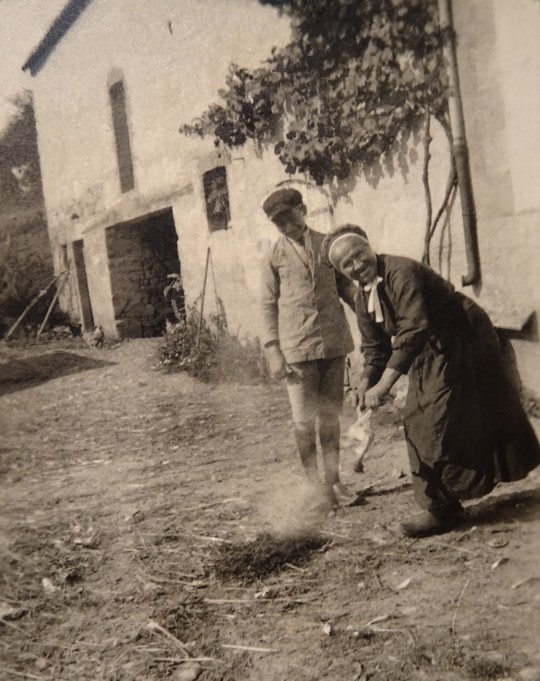


Je reprends ma série de vieilles photos. Vie quotidienne à la campagne auvergnate.
Le Breuil-sur-Couze, 1926 - une partie de pêche au parfum de Monet
Bussières - Les Bages, 1927. Peut-être la mère de mon grand-père paternel ?
Orcet, 1925. Partie de chasse
Vichel, 1950. Des vendanges. Je reconnais ma grand-mère à gauche et devant, ce doivent être une de mes sœurs, mon frère et ma tante.
#noir et blanc#vintage#auvergne#le breuil#le breuil-sur-couze#vichel#famille#vendanges#orcet#chasse#pêche#bussières#les bages
3 notes
·
View notes
Text
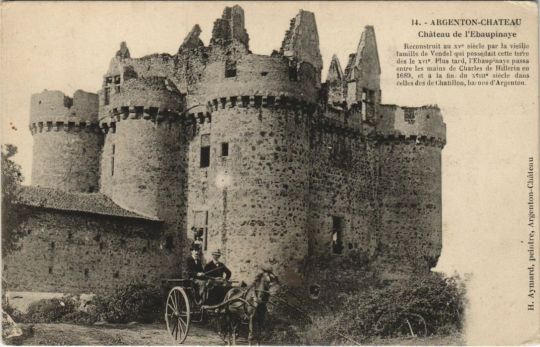
14th-century Château de l'Ebaupinay in Le Breuil-sous-Argenton, Poitou region of western France
French vintage postcard
#historic#chteau#photo#briefkaart#vintage#western#le#region#sous#th#sepia#14th-century#poitou#lebaupinay#le breuil-sous-argenton#photography#argenton#carte postale#postcard#postkarte#france#postal#tarjeta#ansichtskarte#french#old#château de l'ebaupinay#ephemera#de#postkaart
29 notes
·
View notes
Text
ah merdouille !!
il y a plusieurs mois, peut-être même un an ou deux (le temps file je ne sais plus) j'avais répondu à un sondage tâtant le terrain d'audience pour un possible film/série sur la genèse de Milady de Winter - je n'étais pas censé en parler à l'époque, blablabla clause de confidentialité et depuis j'ai oublié pas mal de détails mais ça faisait envie quand même
là j'avais des places de cinéma à utiliser avant qu'elles se périment et du temps à tuer et j'ai été voir Les Trois Mousquetaires : Milady en aveugle, en pensant que c'était ça
ben non
c'est la suite d'un autre film que je n'ai pas vu et qui ne me faisait pas envie en soi
d'après wikipedia malgré le stinger/sequel hook ça n'était pas la moitié d'une trilogie mais la fin d'un diptyque (enfin pour l'instant ?)
et le truc que j'attendais sera une série qui s'appellerait Milady Origins (quel nom à con, mais bon) et n'a pas encore de date officielle
meh je ne vais pas dire que j'ai gaspillé un ticket et perdu deux heures de temps mais j'aurais dû mieux me renseigner d'abord quand même
#anne de breuil#milady de winter#les trois mousquetaires énième adaptation#j'en ai marre de d'artagnan#donnez moi une version où milady séduit constance pour changer#whatthefrance#oops#ah ha je viens d'aller vérifier mon tag personnel pour les 3 mousquetaires sur DW et ça datait de juin 2022 ce sondage d'intérêt#tiens j'avais oublié le détail de la synesthésie#et je ne l'avais pas noté dans ledit post mais je croyais me souvenir qu'elle pourrait être bi ..?
4 notes
·
View notes
Photo

#milady de winter#the three musketeers#les trois mousquetaires#alexandre dumas#anne de breuil#mirielsart
11 notes
·
View notes
Text

BREUIL-BOIS-ROBERT - Yvelines
C'est à dire qu'on a pas tellement le choix...
7 notes
·
View notes
Text

{{VENDU}}
- Ƈօʟʟɛƈȶɨօռ ʄɛֆȶǟ Ƈǟռɖɛʟǟʀʊʍ -
Ʊʟʍʊֆ ʟʊȶɛƈɛ ƗƲ
Ɦɛʀɮǟʀɨʊʍ : Orme "Lutece" (Ulmus Lutece)
ʟɨɛʊ ɖɛ Ƈʊɛɨʟʟɛȶȶɛ : Le Breuil (Bourgogne)
#the crypt and the incubus#witch jewelry#electroformed jewelry#botanical jewelry#pendentif#ulmus lutece#festa candelarum#orme lutece
2 notes
·
View notes
Text
Est-ce une femme ou une fleur ? Qui peut le dire ?
J’ai appris son parfum un matin de printemps,
Quand la rosée se faisait perle, osant prédire
Qu’elle voulait vivre jusqu'à la fin des temps.
Pour être heureuse, elle vivait un peu cachée.
Pour être vraie, elle parlait à demi-mot.
Pour être franc, je ne l’ai jamais vue fâchée.
Une perle ! Et belle comme un coquelicot !
Vous allez me dire que gentil n’a qu’un œil.
Je peux vous assurer que j’ai bien vu les deux !
Mais l’autre était caché par la branche d’un breuil.
Les deux font la paire.....🥀🪶🦋♥️

15 notes
·
View notes
Text
Toques de cinabrio y carmín
A España siempre me lo he imaginado con ropas de color rojo.
En cada dibujo que he hecho del personaje, ya fuese en la época que fuese, he intentado añadir alguna prenda roja. Ya sea una túnica en la época romana, un jubón de un tono brillante en el siglo XVI, en la solapa del abrigo blanco que se ve en las ilustraciones de la época de Carlos III o incluso de la Guerra de Independencia.
(Además de una camisa de cuadros en tiempos modernos).
Incluso si es algo lógico, puesto que es color predominante en la bandera, ha habido momentos en los que me he preguntado si aquello era históricamente correcto.
Y la relación que he encontrado entre España y el color rojo es bastante sorprendente.
[Os juro que esta es la última vez que hablo de tintes históricos, ¿vale?].
El bermellón o cinabrio es un color de origen mineral. Incluso si se ha podido encontrar en múltiples minas alrededor del mundo, es considerada una de las mayores riquezas mineras del país, puesto que además de ser el origen de un pigmento de rojo muy potente, también tiene un alto porcentaje de mercurio en su composición.
[Uy, qué novedad; un pigmento que resulta venenoso. No estamos ahora para eso.]
Se extrajo durante más de 2000 años de la mina de Almadén (Ciudad Real), aunque hay pinturas rupestres en las inmediaciones —como las descubiertas por el abate Henri Breuil—, que nos indican que ya había captado la fascinación de los nativos desde antes.
Aun así, la primera referencia a la actividad minera en la zona se encuentran en la Geografía del griego Estrabón en el siglo I a.C. y en la Historia Natural de Plinio el Viejo.
Muy valorado por los romanos, que tuvieron incluso que fijar su precio, tras su extracción de las minas se exportaba a Roma en recipientes precintados para la elaboración del bermellón. Su uso estaba reservado a las élites y el emperador.
[Y, por supuesto, al niño España.]
Después, fue explotada por los árabes, como relata el historiador Al-Isidri en su Descripción de España, del siglo XII, y, tras la recuperación de la zona, pasó por diferentes propietarios, algo olvidada, hasta 1554, en el que volvió a recobrar importancia.
Ese mismo año, Bartolomé de Medina le propuso al Virrey de Nueva España una nueva técnica para la extracción de una mayor proporción de plata del mineral que la brindada por los procedimientos indígenas; una amalgama con mercurio o azogue, como se le llamaba en ese momento.
Los barcos que se dirigían hacia América iban cargados de mercurio contenido en toneles de madera reforzados con hierro, que se extraía de las minas de Almadén. Durante los tres siglos hubo extracción de este mineral, hasta 1799, en la que se suprimió la pena de minas —trabajos forzados de presos para la extracción de los minerales.
(Volvió a ser empleada para la extracción de mercurio para el pago de la deuda de Franco con Alemania, hasta 1944. Se cerró oficialmente en 2003).

Mineral del que se extraía el tinte. Se caracterizaba por el tono entre rojo y violáceo de los cristales.
En América también se encontró otro pigmento, el carmín cochinilla, que los españoles reconocieron en objetos y telas de culturas prehispánicas. En Europa existía ya un tinte carmesí, denominado de quermes, que había sido empleado en Grecia y Egipto durante la Antigüedad y que tenía gran popularidad, por lo que se podía intuir más o menos su origen.
Ambos se obtenían de las hembras de cochinillas de diferentes especies, que se recolectaban, se desecaban al sol, consiguiendo una especie de semilla denominada grana que después se pulverizaba.
Aunque, desde la introducción del proveniente de especies americanas en la primera mitad del siglo XVI, se optó por el segundo porque se consideraba más bonito, permanente y rendía mejor.
Fue una de las mayores riquezas novohispanas; era considerado el material con más valor después del oro y la plata. Tal como ocurrió con el cinabrio, el pigmento pronto se volvió típico de las clases altas, especialmente popular entre los eclesiásticos y los pintores de la época, como Rembrandt.
Y, a pesar de las dificultades por mantener la mayoría de secretos en esta época y los esfuerzos de ingleses y franceses por conseguir la fórmula, el carmín cochinilla permaneció como un material monopolizado por la Corona hispánica y comercializado entre la península y Nueva España hasta su posterior independencia.
(Aunque he encontrado fuentes en las que se dice que el intercambio comercial duró 450 años.)
Para terminar, cuando hice la publicación sobre el azul de Prusia y el verde de Scheele (Conviviendo con la muerte), mencioné que Heinrich Diesbach estaba intentando crear un tinte rojo, precisamente para conseguir arrebatarle el monopolio.
Como ya se sabe, no lo consiguió.

Grana que se emplea en la actualidad como colorante alimenticio.
#aph spain#hws spain#aph rome#hws rome#historical hetalia#historia#history#venenos#(por tener todos los tintes en la misma etiqueta)
3 notes
·
View notes
Photo
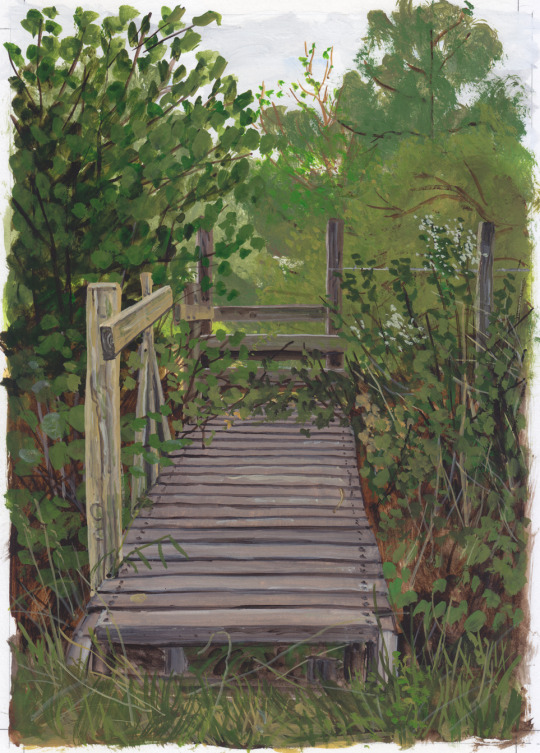
Passerelle sur la Villette entre le Breuil et le Gravelot, Corbon – gouache, 21 août 2022.
#2022#passerelle#villette#le breuil#le gravelot#corbon#orne#perche#normandie#gouache#paysage#paysage gouache#rambarde#pont#vegetation#ete#summer#feuilles#arbres#campagne
50 notes
·
View notes
Text
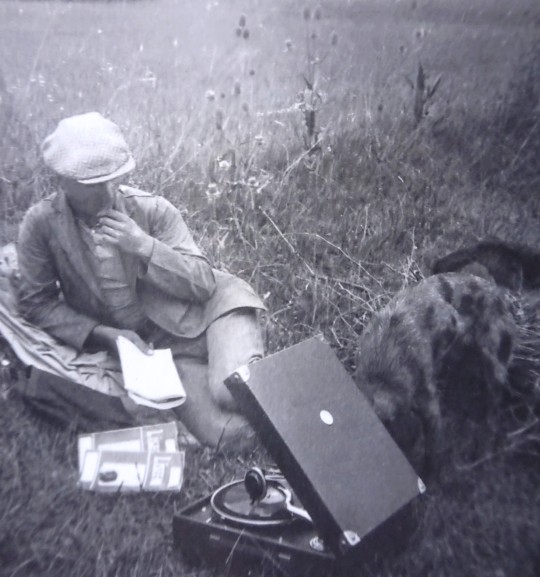

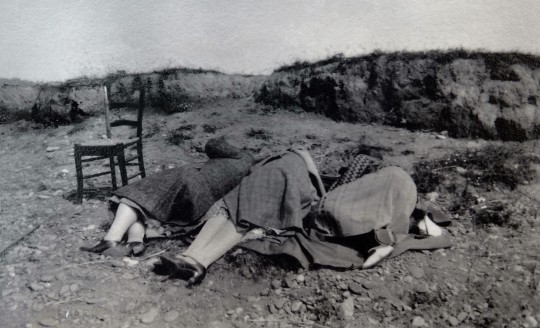

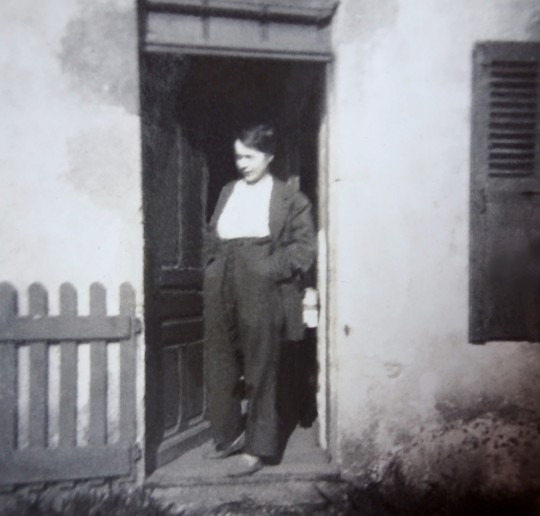
Je reprends ma série de vieilles photos. Des prises de vue étranges prises en Auvergne:
Vichel (Auvergne), 1935 : un homme et son chien écoutent de la musique sur un gramophone (je pense ?), dans un pré
Vichel, 1929 : zoom étrange d'un poupon, entre deux fillettes. Une scène de Shining ?
Le Breuil-sur-Couze, non loin de Vichel : non, pas de tuerie en série mais plutôt du repos après une partie de pêche.
La Léchère (Auvergne), 1931 : ma mère, âgée de 1 an observe un pneu dix fois plus gros qu'elle !
Vichel, 1936 : ma grand-mère habillée en homme !
#noir et blanc#vitage#famille#auvergne#vichel#le breuil#le breuil-sur-couze#the shining#la léchère#gramophone#années 20#années 30
1 note
·
View note
Text

Church of Le Breuil, Bourbonnais region of central France
French vintage postcard, mailed in 1953
#church#historic#photo#briefkaart#vintage#le#region#1953#sepia#photography#carte postale#bourbonnais#central#postcard#mailed#church of le breuil#postkarte#france#postal#tarjeta#ansichtskarte#french#old#ephemera#postkaart#breuil
4 notes
·
View notes
Text

I posted 1,347 times in 2022
That's 1,310 more posts than 2021!
106 posts created (8%)
1,241 posts reblogged (92%)
Blogs I reblogged the most:
@irisseireth
@automaticdreamlandkid
@breval
@pizza-hats-of-the-world-1882
@neednottoneed
I tagged 829 of my posts in 2022
Only 38% of my posts had no tags
#milady de winter - 127 posts
#athos - 109 posts
#the musketeers - 53 posts
#q - 47 posts
#nin writes - 38 posts
#aramis - 32 posts
#nin has a microphone (self) - 21 posts
#anne de breuil - 20 posts
#the three musketeers - 18 posts
#musketeer march 2022 - 17 posts
Longest Tag: 140 characters
#this year due to covid we had a more tame sleep over and i was in one room with a friend while two others texted us over the other room like
My Top Posts in 2022:
#5
Hey, so @silverssarcasm and I are doing *things* leading up to Musketeer March. This functions both as a standalone story and a prequel of sorts to what’s about to come starting on March 1st (and to the Athamis Files, but that’s still in need of a good rewrite).
What’s Things we haven’t said? Basically, a rewrite of the end of season two under the premise that Milady never left and sought to be Anne again, peppered with some historical facts, more drama and yes, trying to join the show’s timeline with book!canon and actual history in the background. You might like it if, like us, you think Athos and Milady deserved to allow themselves to talk to each other and seek as much reconciliation as they can handle. Please note that general triggers are listed in the tags, and more specific ones will be detailed in each chapter’s notes.
Summary: After Catherine nearly succeeded in killing his wife, Athos is grappling with the fact that Anne said the truth all those years ago. But Rochefort has thrown all of Paris into chaos, his friends are in mortal danger, and there are bigger things at stake than two broken souls fighting for a chance at redemption.
Rating: M
Status: unfinished, but updated regularly. Currently at Chapter 10.
Read on A03
20 notes - Posted February 24, 2022
#4
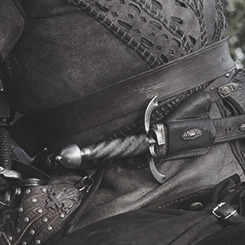

See the full post
32 notes - Posted August 31, 2022
#3
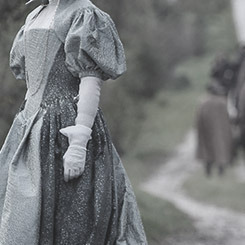
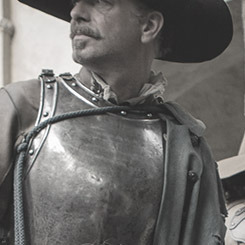
See the full post
46 notes - Posted July 29, 2022
#2
Today is 5th of December, and on this day in 1870, Alexandre Dumas (père) died. Let us toast to the stories we still enjoy after all these years, the anecdotes and the characters we love.

114 notes - Posted December 5, 2022
My #1 post of 2022
Next book we should email people chapter per chapter is The Three Musketeers, starting on March 14th as it did originally on Le Siècle.
697 notes - Posted May 8, 2022
Get your Tumblr 2022 Year in Review →
3 notes
·
View notes
Photo
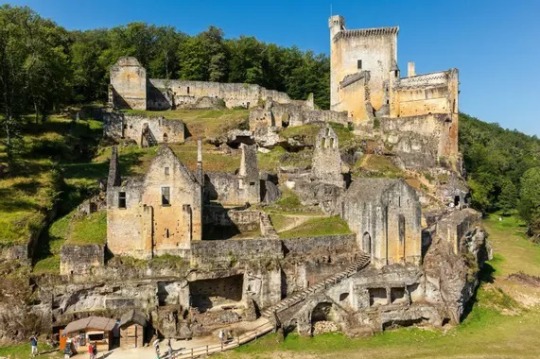
Le château de Commarque se dresse entre Sarlat et Les Eyzies, dans le département de la Dordogne. Il fait face au château de Laussel, situé sur l'autre rive de la Beune, occupé au Moyen Âge par les Anglais.
Chateau fondé au cours du XIIe siècle, Guy de Beynac, dernier châtelain de Commarque, y meurt en 1656. Le site est abandonné définitivement au XVIIIe siècle. Un siècle plus tard, le château est en ruine.
En août 1915, l'abbé Henri Breuil découvre la grotte préhistorique de Commarque dans la falaise qui soutient le château. Elle renferme 150 dessins gravés par l'homme il y a 15 000 ans, au Magdalénien. La grotte est classée au titre des monuments historiques en 19246.
En 1968, Hubert de Commarque, descendant de la famille originelle, achète les ruines du château. Le site est, à l'époque, entièrement recouvert par la végétation. Il entreprend de consolider les parties les plus abîmées. Depuis 1994 se succèdent des campagnes de consolidation et de restauration.
3 notes
·
View notes
Text
Wednesday 13 August 1834
6 ¼
11 40
twenty minutes quietly with A- before getting up fine morning F68° at 6 ¼ am - made tea for A- off in cabriolet to Firminy at 7 25 – good road (only opened 5 years ago – the old road considerably to the right and [very] up and down) all the way except thro’ the village of Chamond or some such name – and there the street narrow and pavé terrible – the street to be widened and made good – a few houses already rebuilt and set back – left the town of Firminy (left) and drove down to the coal mine or rather coal quarry and there at 8 50 – the ingénieur not there –would not come till 11 – lives in the chateau – in ½ hour in the quarry – exactly like a common stone quarry, only coal instead of stone – quarrying enormous masses - 100 workmen - the piqueurs earn 2/25 and the carries 1/75 per day - as much as a man carry of large pieces sells for 4 sols - 3 men killed 7 months ago by the falling down of a mass of rock - drove to the chateau - Mr Morillo (ingénieur or chef des mines de Firminy) at home – very civil – would return with me to the coal quarry – and had the horse put up at the chateau – above an hour shewing me all over the quarry and explained about the steam engine pump - 24 horse power - much power lost by being at such a distance from the works and communicating with the well by iron bars 100 yards length? but the ground so tender so full of old mines, and given to fall in, that they durst not sink the pit or well nearer - this pit 20 toises deep, but the pump only brought up the water to ½ way and then it runs off by an old gallery - the water I saw forming a little cascade from the top into the quarry and thence by an old gallery is turned there on purpose - the mine here often on fire - afraid of it now so has turned the water down - the numberless old galleries and wet and pyrites cause the fire - will be obliged to Noyer the mine, fill it with water once every 3 years - of course, prefers doing it in winter - this mine worked as now (au jour) only 3 years - was worked before underground in the common way - the different proprietors of the soil worked the coal and made nothing of it - the mine was given up - coal immediately under the row of houses that bounds the quarry to the east, but the proprietors not willing to take a reasonable price, so the coal company prefers having the coal - but when they have got it 4 or 5 yards from the houses, they have only had 12ft. of
SH:7/ML/E/17/0074
soil to remove they are now taking off about 20ft. deep of stuff, soil and shale, and a vein of grit stone about 10in. thick - they throw the stuff back, and make into ground again what they do not want to quarry - this company gets 500,000 quintaux métriques (1 quintal metre= 100kilos) per annum that is, one-fourteenth of all the coal got per annum in the basin houlier (coal basin of St. Etienne and Rive de Gier) and one-sixth of all the coal got into the St. Etienne district - only 3 years qu’on a travaille à découvert (in open quarry) as at present - La couche du Breuil (i.e. coal, 40, 50, 60,70, to 80ft. thick - La benne corve) pèse en gros morceaux 150 kilos environ - 10 to 12 bennes in cubic metre of coal - sells here for 1/30, 1/. and six sols le benne - sur 2040 bennes got last year on peut avoir gagné 60,000fr., but this was an extraordinary gain, in consequence of regretting in old galleries having no stuff to move etc and cannot be expected to occur again - may reckon the average price at ./75 per benne, here, at the pit’s mouth - the taxe paid to government twofold - taxe fine, 20/. per kilometres carré, and, take according to the étude de la concession, and which is proportioned to the benefice that is gained which various every year - 58 kilometres got last year paid altogether 2000/. - besides this there is the proprietor of the land (surface) to pay, and the law gives him one-sixth of the coal got i.e. one benne out of every six, but this is too much and the company pays by agreement only one-tenth, 1 benne out of ten - of what is got already there are 15 surface proprietors - and the company has paid one proprietor as much as 20,000fr. per annum - the members of the co. are concessionaires du government - all the mines in the kingdom belonging to government, and for which the concessioners pay the 2 above named taxes or charges - the land is here so divided - so many proprietors the mines could not be so well worked if government had not taken them into their own hands - this was done in 1814 under Louis 18 - the marquis d’Osmond had concession of all the mines in the basin de St. Etienne made to him before the 1st revolution - he emigrated and lost it - had it restored on the return of the Bourbons and sold it - it is Carillon Gaeury quais des Augustins no. 14 à Paris who is libraire to the Ecole des mines at Paris - M. Morillo on our return from the quarry, very civilly introduced me to his mother (from about 25 lieues from Paris near Troyes) and asked me to breakfast – breakfast à la fourchette at 11 ¼ - very good breakfast riz de veau à la chicorée (very good) large cold poulet or small dindon, épinards a sort of tart, and a gateau with almonds and green grapes and green gages, and vin du pays - talked away – afterwards went with Monsieur to his bureau for a few minutes and wrote down from his dictation almost all the above renseignements –gave him my address at Shibden and in the rue St Victor à Paris and said I should be glad to see and do him any service – told him I had coal of my own and should perhaps return to St Etienne to learn measure underground etc – wished good morning to Madame who seemed to have thought me bien amiable and off from the chateau de Firminy at 12 ¼ - They had pumped me about my politics said I was no politician but owned myself naturally a Tory – Lord Grey and Mr Stanley retired in consequence of O’ Connell’s Irish church bill and Lord Melbourne prime minister – odd I should 1st learn this at Firminy! Home at 1 50 in 1 35 hour 10 minutes longer than we were in going – tired of the slow going and great heat – paid all - our hostess would have profited prettily by us if she could - Off from l’hotel de l’Europe chez ‘Teinturier de Lyon’ at 2 50 – nice road and country – Guyonnière merely a single house poste and hotel de Provence – at 4 33 pass handsome double wood-floored suspension bridge over the broad bedded Loire – had just before seen in the distance left the good-looking town of St Lambert - at 4 50 turn (right) to Montbrison and leave good road to....... dusty but not so much so as yesterday - All the women (except les grandes) ride califourchon new road opened 2 years ago from St Etienne to Marseille (missing Lyon) going direct to Tain - 3 days journey from Paris to M- saving said my cocher 8 years in the 16th chasseurs till the revolution in 1830, servant to his colonel M. de la Tour du Pin ‘le roi des hommes’ - would have ‘verse la dernière goutte de son sang pour lui’ - who saying he has juré to serve one king and would not serve 2, tore off his épaulettes and broke his sword (at Dieppe) and left the service - the men all in tears on his bidding them farewell - At 5 ¼ we near the mountains – at 5 35 St Priest and chateau on conical mountain top – have seen 2 or 3 good chateaus since St Etienne this afternoon - fine open country – good road – at 6 5 alight at l’hotel du Nord at Montbrison – this little demoiselle of the house wanted 3fr. per bed for our own 2 – would not give more than 2/. she herself asked 3/. a head for dinner and gave us a very meagre, bad one - no potage - dinner at 7 – sat talking – lastly riz au lait to make up for bad dinner - wrote all the above of today till 11 20 - A- in bed soon after 9 pm - very fine day F72° now at 11 20 pm.
went to see the pit at some distance behind the chateau where the steam engine brought up both coal and water from 40? toises deep - primitive mountains here - 60,000 inhabitants in the parish of St. Etienne
2 notes
·
View notes
Text
Vidéo : la scène hallucinante d'un télésiège et de ses passagers pris dans une rafale de vents à plus de 110 km/h
Ce jeudi 28 mars, la Vallée d’Aoste a été le théâtre de vents très violents, secouant notamment les télésièges de la station de ski.
Des télésièges occupés par des passagers qui ont dû s’accrocher bien fortement.
Ça devait être une journée de ski tranquille à Breuil-Cervinia, dans les Alpes italiennes, quand soudain la météo a rapidement changé d’humeur.
Ce jeudi 28 mars, en début d’après-midi,…
View On WordPress
0 notes